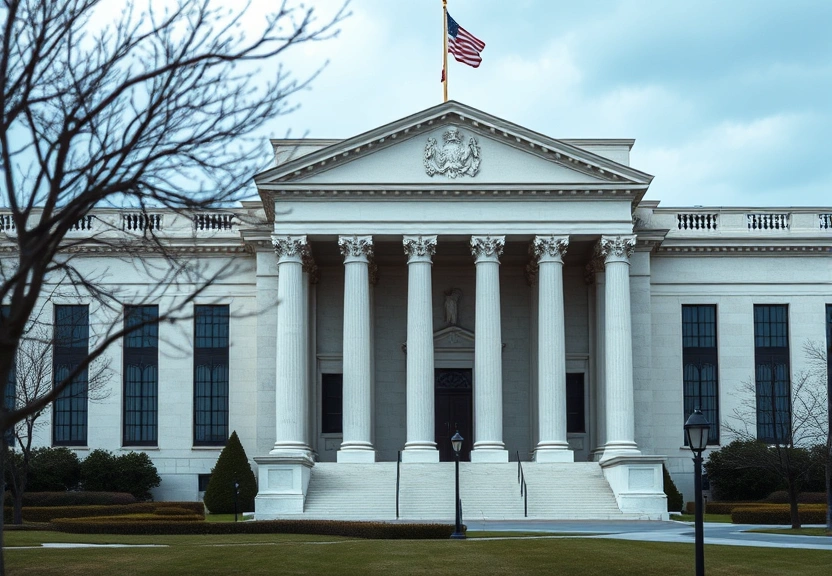Fed Holds Steady as Mortgage Rates Stabilize in Crucial Market Week
In a week marked by heightened scrutiny over economic indicators, the Federal Reserve opted to maintain its current policy stance, resulting in a stabilization of mortgage interest rates. As of the week ending July 30, mortgage rates remained largely unchanged, reflecting a period of calm in what has been a volatile economic environment. This decision underscores the Fed’s commitment to achieving its dual mandate of maximum employment and stable prices, even as the housing market faces ongoing challenges.

The Fed’s decision to hold steady comes at a crucial juncture for both homebuyers and the real estate market at large. With inflation concerns still looming, the Fed’s economic policy actions are closely watched by market participants, especially those in the mortgage sector. This article delves into the implications of the Fed’s recent decisions on mortgage rates, the broader economic landscape, and what homebuyers and investors can expect moving forward.
The Federal Reserve’s Economic Policy: A Steady Hand
The Federal Reserve has a mandate to monitor and adjust monetary policy to promote economic growth while controlling inflation. In recent months, inflation rates have fluctuated, prompting speculation regarding potential interest rate hikes. However, the Fed’s decision to keep rates unchanged signifies a cautious approach aimed at balancing these competing concerns. By holding steady, the Federal Reserve aims to provide stability to the financial markets, which is particularly crucial in the current economic climate.
Understanding the Fed’s Decision-Making Process
The Fed’s decisions are influenced by a variety of economic indicators, including employment rates, consumer spending, and inflation metrics. The current economic policy reflects the Fed’s strategy to ensure that any adjustments to interest rates are justified by solid economic data. By opting to maintain the status quo, the Fed sends a clear message to the market: stability is a priority, and it will take measured steps toward any potential shifts in interest rates.
The Impact of Stable Mortgage Rates
Mortgage rates are a critical component of the housing market, influencing homebuying decisions and overall market dynamics. As mortgage rates have stabilized, potential homebuyers may find a more favorable environment to make purchasing decisions. This stability can encourage new entrants into the market, which could stimulate demand for housing and, in turn, contribute to overall economic growth.
Key Factors Contributing to Stable Mortgage Rates
- Federal Reserve Policy: The Fed’s decision to maintain interest rates has a direct impact on mortgage rates, which tend to follow the trajectory set by the central bank.
- Inflation Trends: With inflation showing signs of stabilization, lenders may be more willing to offer competitive rates, further contributing to a balanced market.
- Housing Supply and Demand: The current state of the housing market, characterized by inventory levels and buyer demand, plays a crucial role in determining mortgage rates.
- Global Economic Influences: International economic conditions can also affect domestic mortgage rates, as global investors seek safe-haven assets.
The Broader Economic Context
The stabilization of mortgage rates does not occur in isolation; it is part of a larger economic picture. The Fed’s policies are designed to foster an environment conducive to economic growth, which is essential for both consumers and businesses alike. Understanding the interconnectedness of various economic factors is vital for stakeholders in the housing market.
Consumer Confidence and Economic Growth
Consumer confidence plays a pivotal role in economic growth. When consumers feel secure in their financial situations, they are more likely to make significant purchases, including homes. Stable mortgage rates can enhance consumer confidence by reducing uncertainty in monthly payments. This, in turn, can lead to increased spending in other areas of the economy, further bolstering growth.
What Lies Ahead: Predictions for Mortgage Rates
As the Fed holds steady, many are left wondering what the future holds for mortgage rates. Analysts are divided on their predictions, with some expecting gradual increases while others foresee continued stability. Understanding these forecasts can help prospective homebuyers and investors make informed decisions.
Potential Scenarios for Future Mortgage Rates
- Continued Stability: If the Fed maintains its current policy and inflation remains in check, mortgage rates may continue to hold steady.
- Gradual Increases: Should inflationary pressures mount, the Fed may be compelled to raise interest rates, resulting in higher mortgage rates.
- Market Reactions: Unexpected economic developments, such as geopolitical events or significant shifts in consumer behavior, could lead to fluctuations in mortgage rates.
Frequently Asked Questions (FAQ)
1. Why did the Federal Reserve decide to hold interest rates steady?
The Federal Reserve aims to balance economic growth with inflation control. By holding rates steady, it seeks to provide stability in the financial markets and encourage consumer spending.
2. How do mortgage rates affect homebuyers?
Mortgage rates directly influence monthly mortgage payments. Lower rates can make homes more affordable, while higher rates can reduce purchasing power and deter potential buyers.
3. What economic indicators does the Fed consider in its decision-making?
The Fed examines various indicators, including employment rates, inflation metrics, consumer spending, and overall economic growth when making decisions about interest rates.
4. What are the implications of stable mortgage rates for the housing market?
Stable mortgage rates can increase buyer confidence, stimulate demand for homes, and contribute to a more robust housing market, which can have positive effects on the broader economy.
5. What should homebuyers consider when mortgage rates are stable?
Homebuyers should assess their financial situations, consider long-term goals, and monitor market conditions to seize opportunities while mortgage rates remain favorable.
Conclusion
The Federal Reserve’s decision to maintain its current economic policy has led to a stabilization of mortgage rates, providing a moment of calm in a fluctuating market. For prospective homebuyers and investors, this stability presents an opportunity to navigate the housing market with greater confidence. As the Fed continues to monitor economic indicators, stakeholders must remain vigilant and informed, ready to adapt to any changes that may arise in the economic landscape. Ultimately, understanding the interplay between federal policy, mortgage rates, and the broader economy will be essential for making sound financial decisions in the coming months.
📰 Original Source
Este artigo foi baseado em informações de: https://www.nerdwallet.com/article/mortgages/weekly-mortgage-rates-7-30-25


